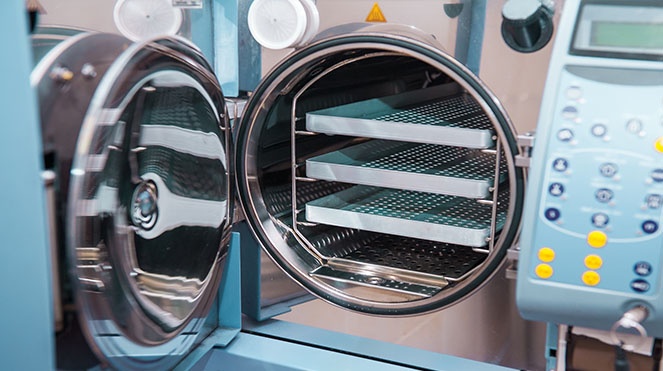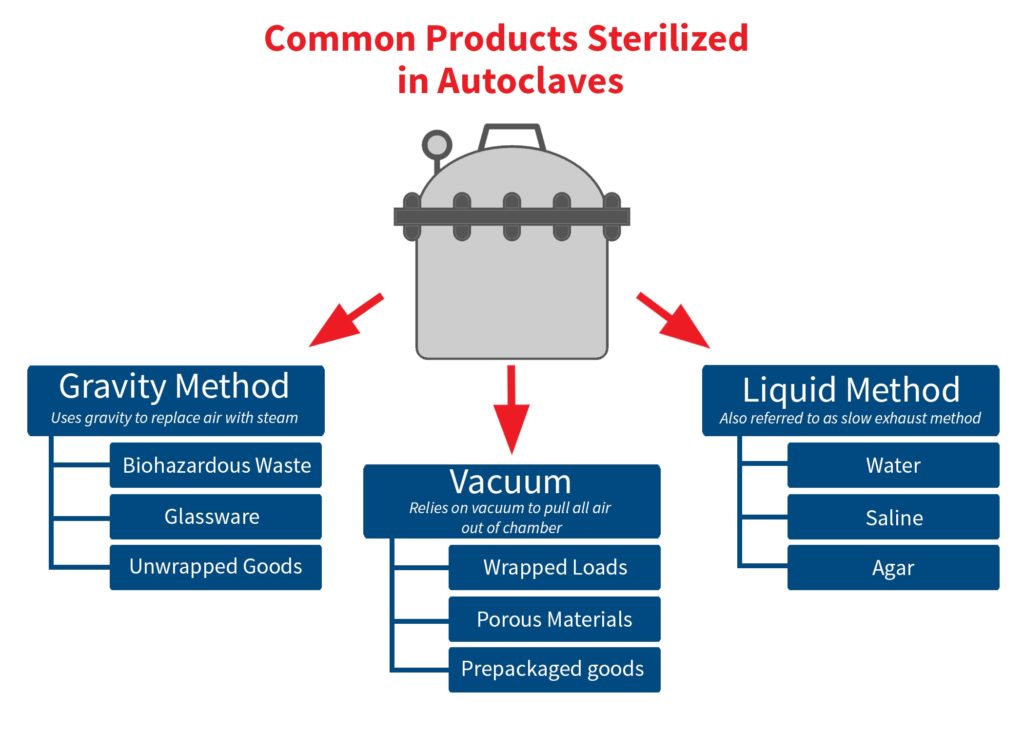
It is easy for first-time autoclave shoppers to become overwhelmed with all of the technical jargon they have to decipher and consider before purchasing a steam sterilizer. One of the most common points of confusion is how to determine which sterilization cycle is best for different applications.
Typically, there are three main types of steam sterilization cycles: gravity, vacuum and liquid. All three use high heat and pressure to sterilize, however, each cycle uses a slightly different tailored process to maximize the conditions for sterilization of certain items.
Gravity
Gravity is the simplest and most common of the autoclave cycles. Like the name suggests, the cycle relies on gravity to replace air with steam. When steam is pumped into the chamber, it rises to the top because it has a lower density than air. This in turn forces the air to the bottom of the chamber, where it is completely displaced from the chamber through a drain port. Once the cycle is complete, the steam is released through the drain vent and cooling begins.
This cycle is ideal for sterilizing biohazardous waste, glassware, and certain unwrapped goods.
Vacuum
An autoclave designed for vacuum cycles will be configured with a vacuum system. This system begins each cycle with alternating steam injections and vacuum pulls, which work together to completely remove air from the chamber. By performing vacuum draws, air can be completely obliterated from even the hardest to reach places. The absence of air also allows the steam to penetrate the entire load rapidly, leading to a faster overall sterilization cycle.
Because of the vacuum, this cycle is ideal for bagged or wrapped loads, porous materials and packets such as pipettes or surgical instruments.
Liquid
Contrary to the first two types of sterilization, the liquid cycle does not involve sterilizing with liquid, but rather,the sterilization of the liquid itself. Professionals familiar with sterilizing liquids know the dreaded phenomenon of the boil-over. This means that when a liquid is being sterilized and heated, it boils over the container, in the same way spaghetti will boil-over if not watched during cooking.
Unlike cooking spaghetti, a wooden spoon cannot be used to prevent boil-over in the chamber. During sterilization cycles, boil-over can occur if pressure is released too quickly during the exhaust phase. To help combat the risk of boil-over, the chamber pressure must be released slowly. Because of this, the cycle is sometimes referred to as the ‘slow exhaust’ method. By slowing the release of pressure, the liquid’s temperature will slowly cool off as the pressure is decreased.







